Facts About Manure: What Every Gardener Should Know
Discover the facts about manure every gardener should know—how to use cow, chicken, rabbit, and pig manure safely, and how to avoid herbicide contamination.
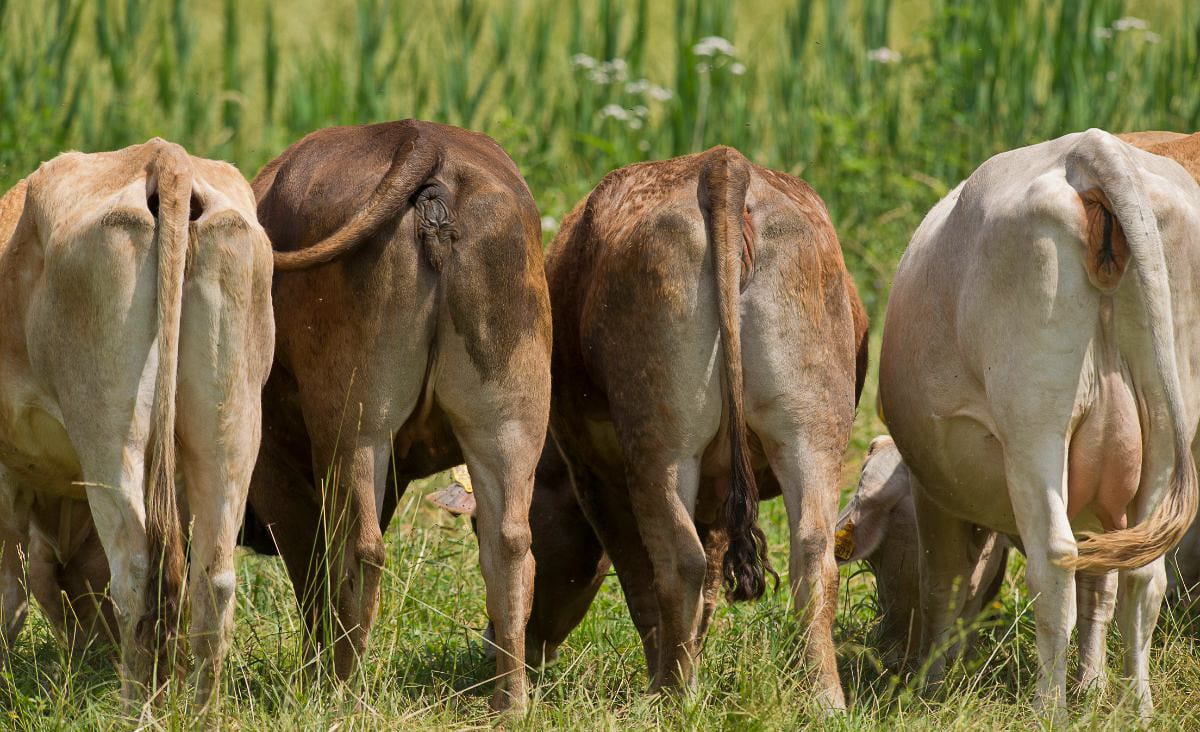
We all joke about “black gold” in the garden, but let’s be honest—it really is that valuable. Manure improves soil structure, boosts fertility, and builds the kind of microbial life that makes plants thrive. But not all manures are created equal, and if you’re not handling it properly, you could end up doing more harm than good.
Manure is one of my favorite tools for improving garden beds, but there are a few things every gardener should know before adding it by the bucketful. In this post, I’ll walk you through the different types of manure, how to use them safely, and what to avoid (like pathogens, raw pig waste, and even sneaky herbicides that hitch a ride in composted poo).
Let’s dig in.
Why Manure Matters in the First Place
Manure is more than just poop. It’s a rich source of organic matter, nitrogen, phosphorus, and microbial life that improves your soil over time. When aged or composted correctly, it can feed your garden, improve drainage, reduce compaction, and even out soil pH.
But the key word here is “correctly.” Manure needs time, heat, and the right carbon balance to become safe and effective.
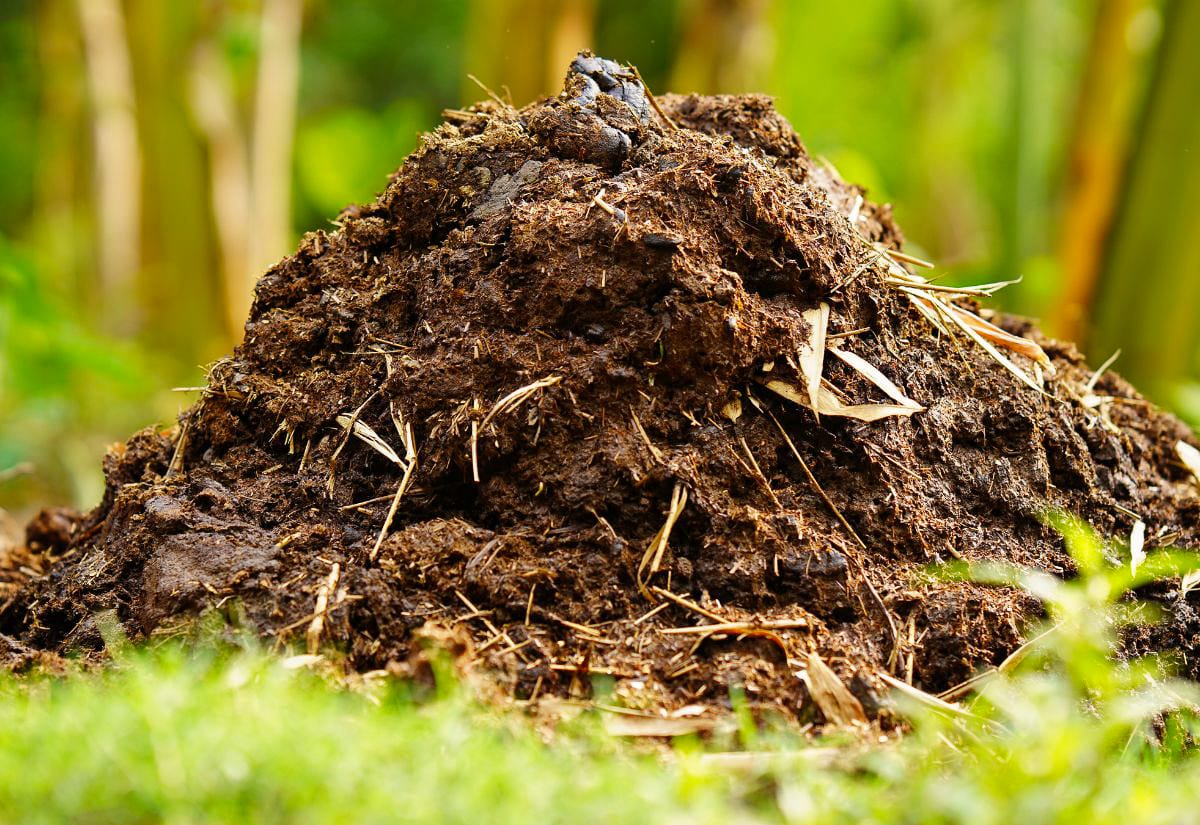
If you’re using manure in a no-till or heavily mulched garden, it’s important to understand how manure impacts nitrogen availability in no-till or mulch-based beds. Not all nutrients behave the same way under wood chips and compost layers.
The Problem with Using Fresh Manure
Using manure straight from the barn might seem like a good idea, but there are three solid reasons to avoid it:
It Can Burn or Kill Plants
Fresh manure is often too high in nitrogen, and that concentration can “burn” seedlings or tender roots. It also contains nitrogen in a form your plants can’t use yet—aging transforms it into a more accessible version.
It Throws Off the Compost Balance
Manure is considered a “green” in composting terms. For best results, you need to balance it with enough “browns”—things like dried leaves, straw, or wood shavings—to break down safely and thoroughly.
It Can Carry Pathogens and Salt
Raw manure may contain E. coli, salmonella, parasitic eggs, or digestive salts—all of which can contaminate your soil or harm your plants. Composting at a high enough temperature kills off most of these threats. Use a compost thermometer to make sure your pile gets hot enough to kill pathogens.
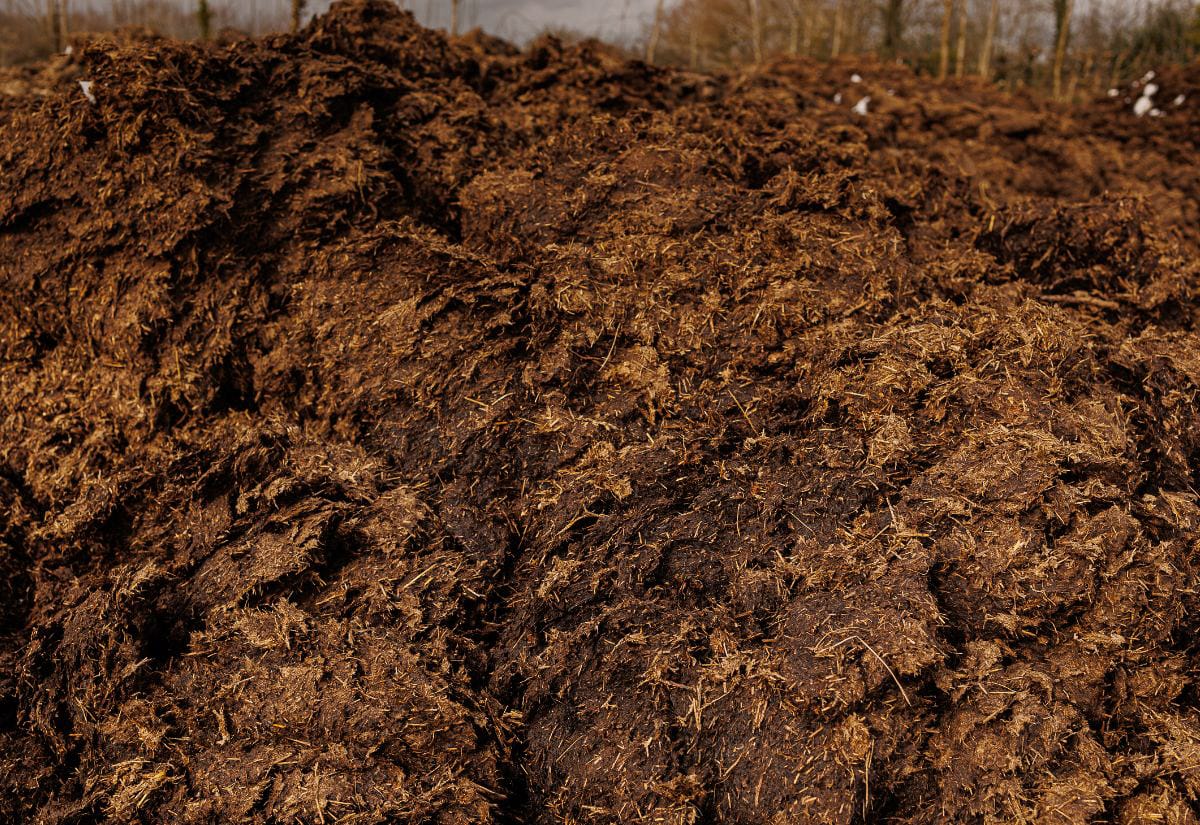
Tip: Always compost manure before adding it to your vegetable garden. Aged manure is less risky and far more effective.
Quick Rundown of the Most Common Manures
So which kind of manure is right for your homestead garden? Here’s what you need to know:
Chicken Manure
Pros: Extremely high in nitrogen and phosphorus—great for leafy greens
Cons: Can burn plants if not fully aged
Cow Manure
Pros: A gentle, balanced manure safe for most gardens
Cons: Lower in nutrients than others
Horse Manure
Pros: Similar to cow, great for building soil
Cons: May contain weed seeds unless composted hot
Rabbit Manure
Pros: Pellet-like, dry, and mild—safe to apply directly in small amounts
Cons: Not as nutrient-dense as poultry manure
Goat Manure
Pros: Small, dry pellets that break down quickly
Cons: Milder nutrient profile but excellent when composted
Pig Manure
Pros: Can add organic matter when properly composted
Cons: Often wet and high in pathogens—never apply raw, especially near food crops
Don’t skip this step: Pig manure should be hot-composted for several months. It’s not safe for direct use in garden beds due to the risk of parasites and bacteria.
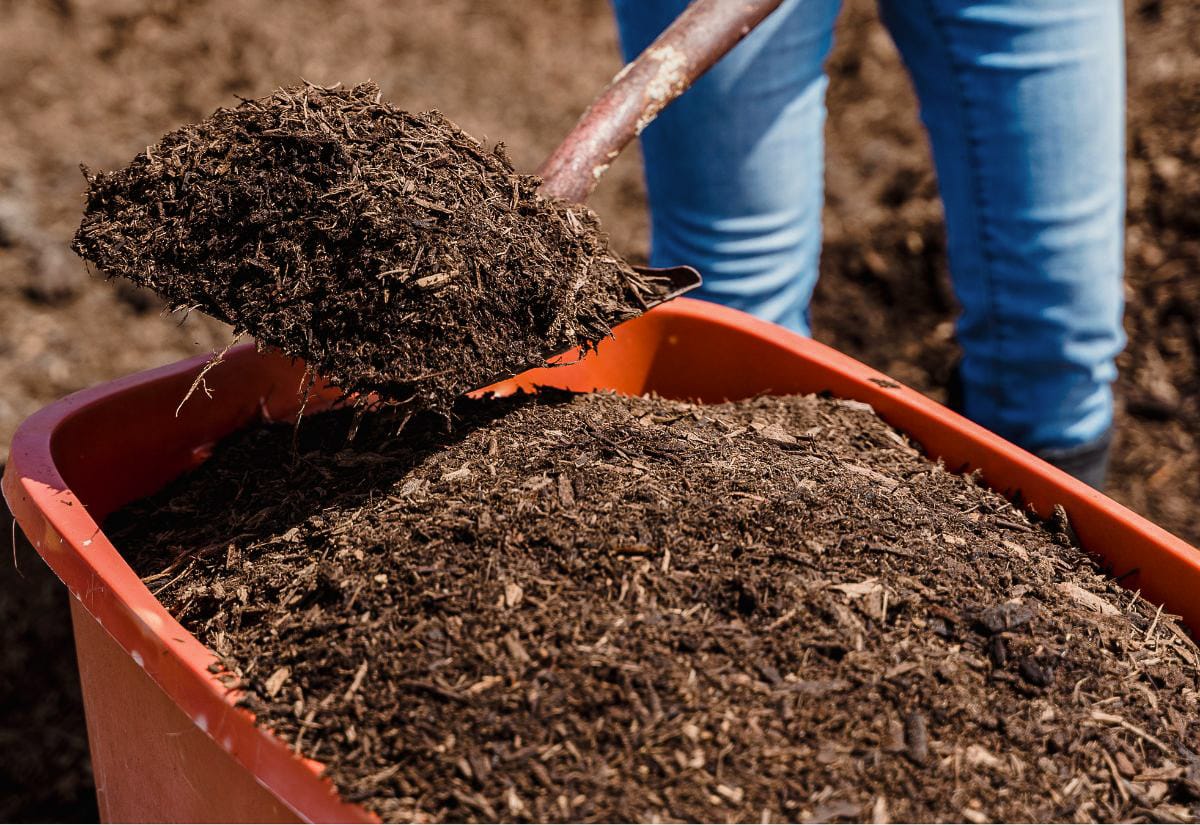
Best Manure Types for Different Garden Areas
Manure isn’t one-size-fits-all. Here’s how I break it down:
- Flower Gardens: Cow, horse, and rabbit manure—applied early in the season
- Vegetable Gardens: Chicken, cow, horse, and rabbit—use in spring and again in fall
- Root Crops: Same as above, but avoid fresh manure near harvest time
- Acid-Loving Plants: Stick with cow or horse manure in early fall to avoid altering soil pH too quickly
Pair your soil-building efforts with companion plants that help your soil and work well alongside manure amendments, especially herbs that fix nitrogen or deter pests. Also, learn how to use wood ash safely in the garden . It’s powerful, but easy to overdo.
How Much Manure Should You Use?
It depends on the application, but here are some starting points:
- General soil conditioning: 40 lbs per 100 square feet
- New or poor soil: Up to 80 lbs per 100 square feet
- Top dressing: A 1–2″ layer is usually sufficient
Pro tip: Always mix it into the top few inches of soil to avoid surface nutrient loss and reduce odors.
Looking for budget-friendly ways to feed your garden? These affordable soil-boosting tricks using items you already have in your pantry can stretch your compost and your dollar.
Heads Up: Persistent Herbicides in Manure
Even if you compost properly, there’s one thing that heat can’t destroy—persistent herbicides. These chemicals (like aminopyralid and clopyralid) are used on pastures and hay. They pass through the animals unchanged and can show up in their manure, wreaking havoc on your garden.
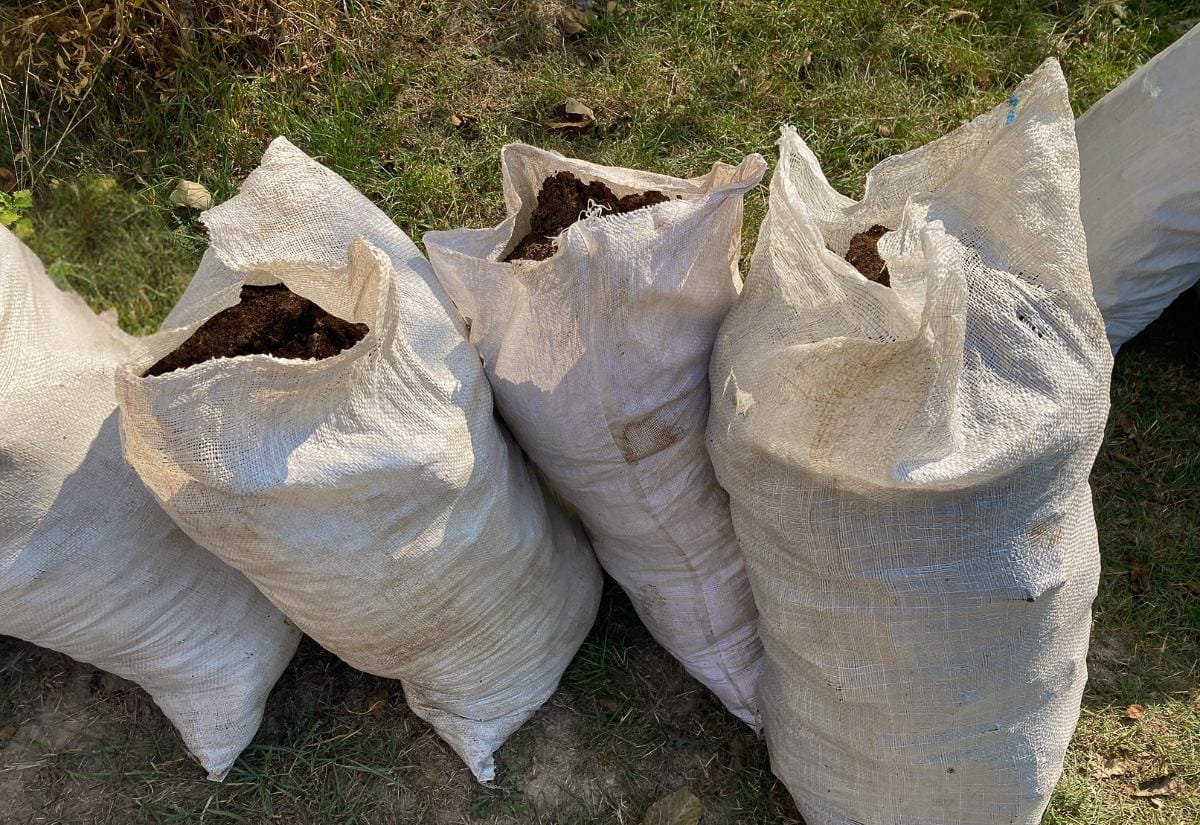
You may not notice until your tomatoes curl up or your beans refuse to grow—and by then, your beds could be contaminated for years. One gardener’s experience with this exact issue was eye-opening—read how The Prairie Homestead discovered herbicide-contaminated manure was ruining her garden and what she did to recover.
Tip: Always ask your manure source if their animals were fed sprayed hay or pasture forage. When in doubt, do a bioassay test using potted plants and compost before using large amounts in your garden.
Frequently Asked Manure Questions
Still have questions? You’re not alone—here are a few I hear often:
Want to remember these tips? Save this post to your gardening board so you’ll have it when you’re prepping next season’s beds.
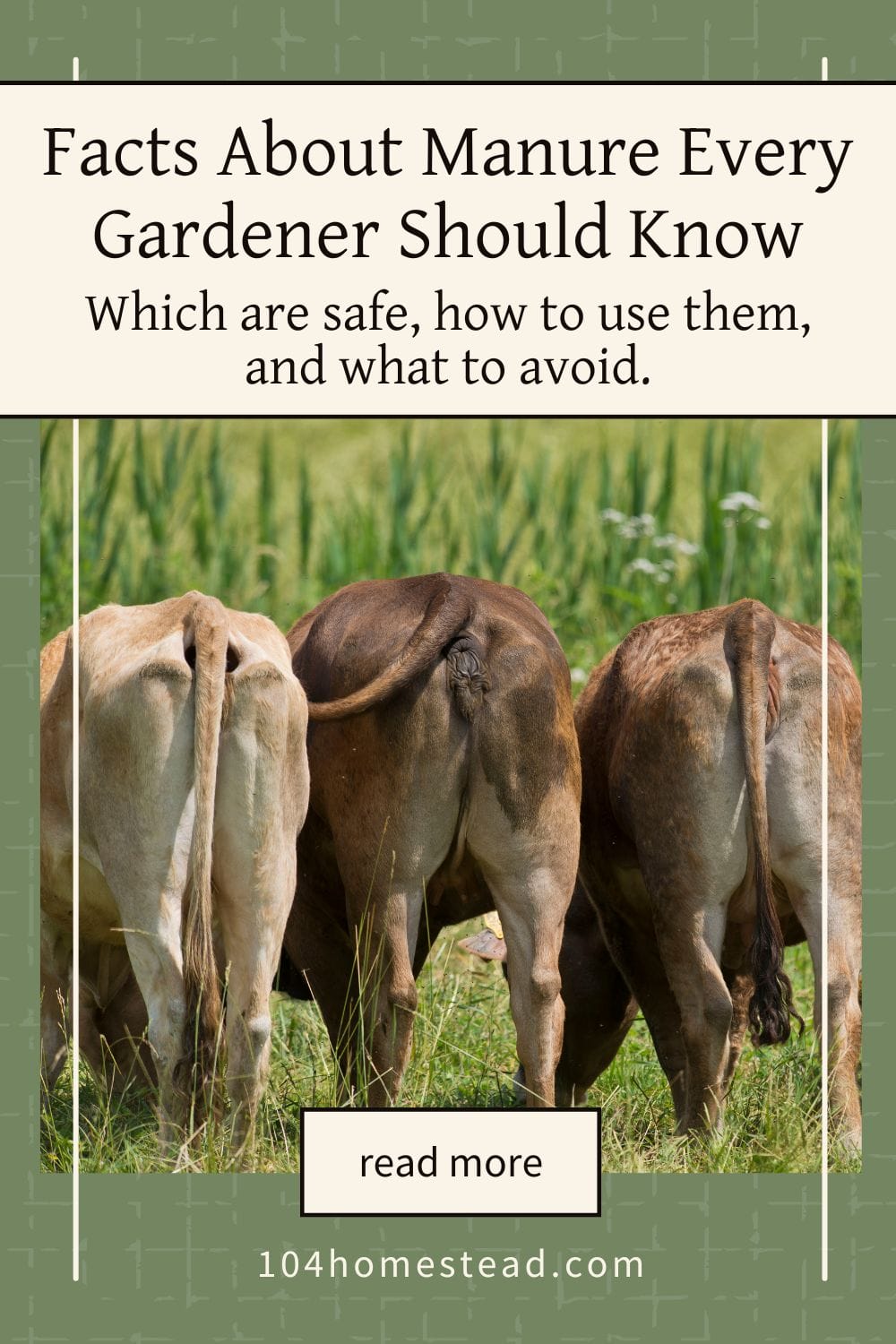
Manure is one of the most powerful tools you can add to your homesteading garden—when used right. Whether you’ve got access to rabbit pellets, a big pile of cow manure, or just a few shovels of composted chicken waste, there’s a way to make it work.
Start with what you have. Compost it if you can. And when in doubt—test it out. Your soil (and your plants) will thank you. If your beds have been overworked or chemically damaged, manure alone might not be enough. Learn how to repair and rebuild your soil after years of heavy use with these practical strategies.
Have you used manure in your garden? Share your favorite type and how you use it in the comments—or pin this post to come back to next season.
Originally published in 2015. Updated in 2025 with new safety guidelines, manure types, and best practices for modern homesteaders.
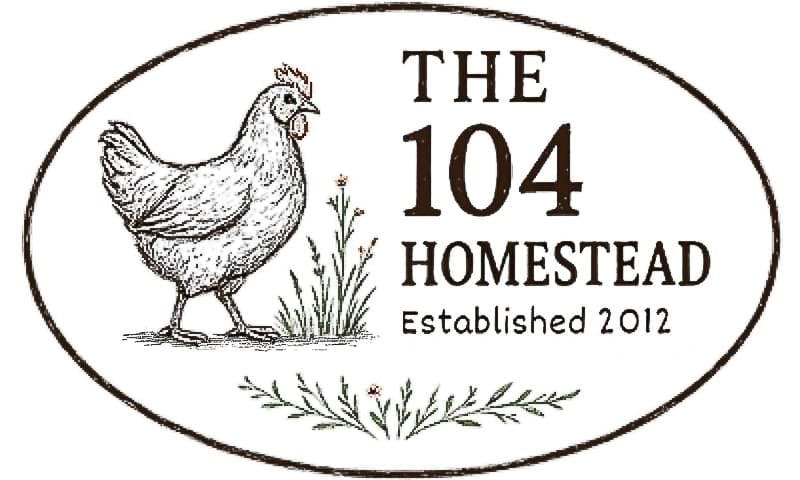
Humanure(human waste manure), hog/pig manure & munure from carniverous animals(dogs/cats/other carniverous & omniverous animals)can be used for veggie gardens but must be “fully cured”by completely decomposing before use. If not it can be used on lawns & landscape plants or say in nut & fruit tree orchards, grape vines & berry vine plants. Also for added benefit letting (especially carniverous animal manure)age a year or two will 100% assure all parasites/harmful bacterias & viruses are gone.Hog/pig manure that is from hogs that have been fed a vegetarian diet can be looked upon as more safer than hog manure that is from an omniverous hog fed diet. fed garbage & animal scraps. Also if the hogs have no intestinal worms the manure would be safer & may not need “aging” a year or two.Now today 70% plus of pork has no worms.
What about pig manure, is that any good?
I haven’t used pig manure, so I’m not sure.
Hi, interesting post. I use a mixture of compost and dried steer manure a lot. But I have found that worm composting and using the worm castings mixed with home made compost works at least equally well. Have you ever used castings? It is organic nitrogen, it will not burn your plants. “Worm” Tea can be made from it as well, again very nitrogen rich. If you haven’t tried worm composting, you may enjoy it, they really are amazing little creatures. Great Post!
Excellent, great information, thanks.
Hello Jessica,missed you, thank you for all the advice.
Jessica,
I am blessed to have a property where I can raise goats, chickens, and rabbits. But I also live down the road from the only organic raw cow dairy in Arizona. She feeds the cows organically raised alfalfa and puts EMs in the water. No hormones are used and if a cow needs antibiotics she is culled from the herd. She gives aways the manure.
I love your blog. You are an inspriration for me.
Luck you! I had a great source for very aged cow and horse manure. It was fabulous stuff. Unfortunately, I think the supply is depleted. I’ll have goat manure next year, but not aged. I have more chicken manure than I know what to do with. My neighbors visit with empty buckets and leave with them full.
Google “persistent herbicides”. You need to know that your hay, grain, straw, grasses, etc were grown on fields that were not sprayed with certain broadleaf herbicides that persist in the soil. They persist in animal manures and are not destroyed by composting. They may also be present in commercial compost. Know what you are using! I learned the hard way!
I honestly had no idea that manures were different! That explains why the horse manure seems to work better then the chicken manure though! Thanks for the info!
Thanks for linking up with Green Thumb Thursday. I hope to see you again this week!
Lisa
Llama and sheep are my favorites. I add using a tea twice a year and then directly add the pellets in the winter, works great with our climate. I’ve used cow and horse when we raised both on our farm a few years back, contains to many seeds from both pasture grass and grain. Those are actually better applied in the form of a tea if you don’t want the weeds. The chickens though they just free range so they fertilize year round without any problems, coops are mobile which is fantastic, waste just gets worked back into the ground. Messy with poo is stinky business and not something I enjoy. LOL
I love compost/manure tea. My dad made me a wishing well style tea maker with a spigot for using a low pressure hose or for filling a watering pail.
Hey there, I have my share of chicken manure mixed with wood shavings and straw. But I also have sheep and llama manure mixed with hay and straw. Last of all I have piles of just plain llama poop. Can you say a few things about these and/or direct me to a good source of how to use this in my gardens. Thanks.
Hi Julie! Great question. I actually posted your question on our Facebook page and these are the responses I got:
“Hi Julie! The farm down the way has llamas. When I took some of her poo she said I should let it compost over the summer. I use deep bedding and clean my coops out in the late spring. I use lots of leaves, straw and such in my bedding and toss some goodies into the bedding for them to scratch and turn it about. But, it’s still steaming when I remove it so it’s not done cooking. I think if it’s still producing lots of heat…let it cook. If it’s not then add it. Now, when I clean the coops out at the end of summer I take that straight to the garden and pile it right on top of a bunch of leaves if I have them and any hay that’s bad. I KNOW that extra heat up top keeps my worms nice and happy so they can eat all those leaves and such. If it’s crumbly like dirt I toss a handful into a wee hole that I’m planting, top dress (sprinkle it about the plant once there’s true leaves). I also take a bag of it and suspend it in a barrel of water to make compost tea. You can use any fabric and just fold the compost up. I let it sit and sit. I mix it so the water doesn’t stagnate and it’s smelly so you only wanna go a week at the longest unless it’s far enough back from the house.”
“Goat manure is actually better than cow manure. Cow manure must be composted first because it has so high a nitrogen content, but goat manure can be placed right in your garden beds with little fear of burning your plants. I do not know about the llama’s, but since its manure is dropped in the form of pellets like goat, deer, and rabbits, I would think this is also true.”
I hope this helps 🙂